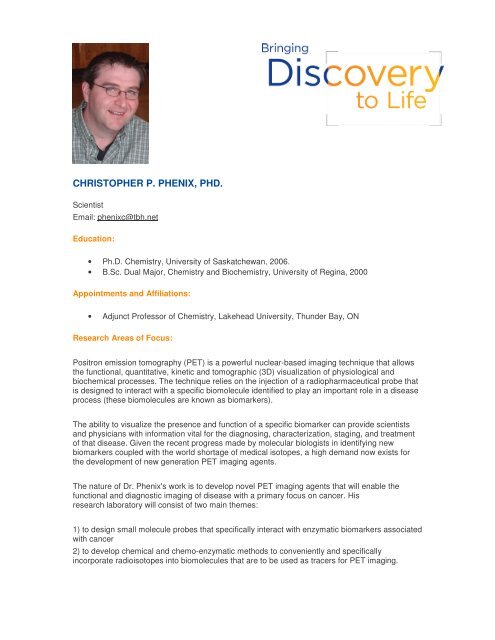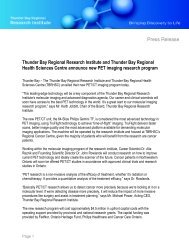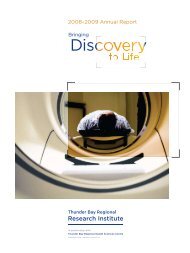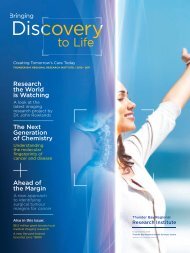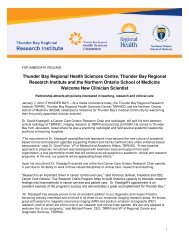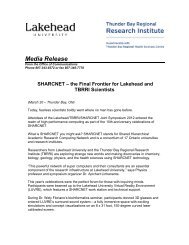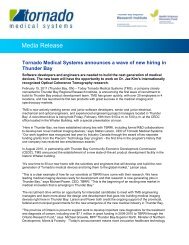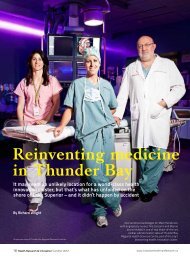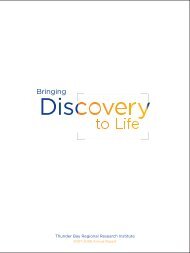christopher p. phenix, phd. - Thunder Bay Regional Research Institute
christopher p. phenix, phd. - Thunder Bay Regional Research Institute
christopher p. phenix, phd. - Thunder Bay Regional Research Institute
- No tags were found...
Create successful ePaper yourself
Turn your PDF publications into a flip-book with our unique Google optimized e-Paper software.
CHRISTOPHER P. PHENIX, PHD.ScientistEmail: <strong>phenix</strong>c@tbh.netEducation:• Ph.D. Chemistry, University of Saskatchewan, 2006.• B.Sc. Dual Major, Chemistry and Biochemistry, University of Regina, 2000Appointments and Affiliations:• Adjunct Professor of Chemistry, Lakehead University, <strong>Thunder</strong> <strong>Bay</strong>, ON<strong>Research</strong> Areas of Focus:Positron emission tomography (PET) is a powerful nuclear-based imaging technique that allowsthe functional, quantitative, kinetic and tomographic (3D) visualization of physiological andbiochemical processes. The technique relies on the injection of a radiopharmaceutical probe thatis designed to interact with a specific biomolecule identified to play an important role in a diseaseprocess (these biomolecules are known as biomarkers).The ability to visualize the presence and function of a specific biomarker can provide scientistsand physicians with information vital for the diagnosing, characterization, staging, and treatmentof that disease. Given the recent progress made by molecular biologists in identifying newbiomarkers coupled with the world shortage of medical isotopes, a high demand now exists forthe development of new generation PET imaging agents.The nature of Dr. Phenix's work is to develop novel PET imaging agents that will enable thefunctional and diagnostic imaging of disease with a primary focus on cancer. Hisresearch laboratory will consist of two main themes:1) to design small molecule probes that specifically interact with enzymatic biomarkers associatedwith cancer2) to develop chemical and chemo-enzymatic methods to conveniently and specificallyincorporate radioisotopes into biomolecules that are to be used as tracers for PET imaging.
Members of his laboratory will receive interdisciplinary training in molecular biology, enzymology,synthetic chemistry, radiochemistry, bioconjugation chemistry, animal biodistribution studies andPET imaging.


